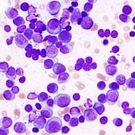Velcade-Torisel Combination Proves Highly Effective In Multiple Myeloma Patients (ASH 2009)

Preliminary results from an ongoing Phase 2 trial show that a combination therapy of Velcade (bortezomib) and Torisel (temsirolimus) is highly effective in reducing blood and urine levels of abnormal monoclonal protein (known as “M” protein) in multiple myeloma patients. The preliminary study results will be presented at the American Society of Hematology’s (ASH) 51st annual meeting in New Orleans on Monday, December 7.
Myeloma cells produce M proteins. Higher levels of M proteins are directly related to increased disease progression and severity.
Torisel, a drug already approved for use in advanced renal cell carcinoma, appears to reduce the amount of M protein in the blood and urine by targeting the myeloma cells that produce them.
While studies have shown that treatment with Torisel alone produces little effect in multiple myeloma patients (see related Beacon article), it seems to have potential in combination with other drugs. In this study, Torisel was combined with Velcade, a drug already approved for the treatment of multiple myeloma.
The study was spearheaded by Dr. Irene M. Ghobrial, M.D., at the Dana-Farber Cancer Institute in Boston. Dr. Ghobrial recruited 27 patients for treatment.
Every 35 days, the patients received four weekly IV infusions of 1.6 mg/m² Velcade and five of 25 mg Torisel.
Nineteen of the 27 patients were evaluated to determine how many achieved at least minor response, which is defined as a greater than 25 percent reduction in M protein levels. The study also examined the side effects of the drug combination.
Fifteen of the 19 patients evaluated (79 percent) achieved at least minor response; one (5 percent) achieved complete remission, three (16 percent) achieved very good partial remission, five (26 percent) achieved partial remission, and five (26 percent) achieved minor remission. For more information regarding the criteria set for each level of remission, please see this related Beacon article.
Two patients (10 percent) remained stable, while two (10 percent) experienced disease progression. One patient died from abnormal heart contractions that were determined to be unrelated to the treatment.
For seven patients (37 percent), doctors reduced the dosage given because of adverse side effects. These included: diarrhea, nausea, anorexia, pneumonia, hyperglycemia (high blood sugar levels), sepsis, gastrointestinal bleeding, and reduction in all blood cell types, especially platelet cells.
Despite the side effects, the study authors expressed excitement over the high response rate to the treatment.
For more details regarding the study, please see abstract 748 at the ASH meeting Web site.
Related Articles:
- None Found

